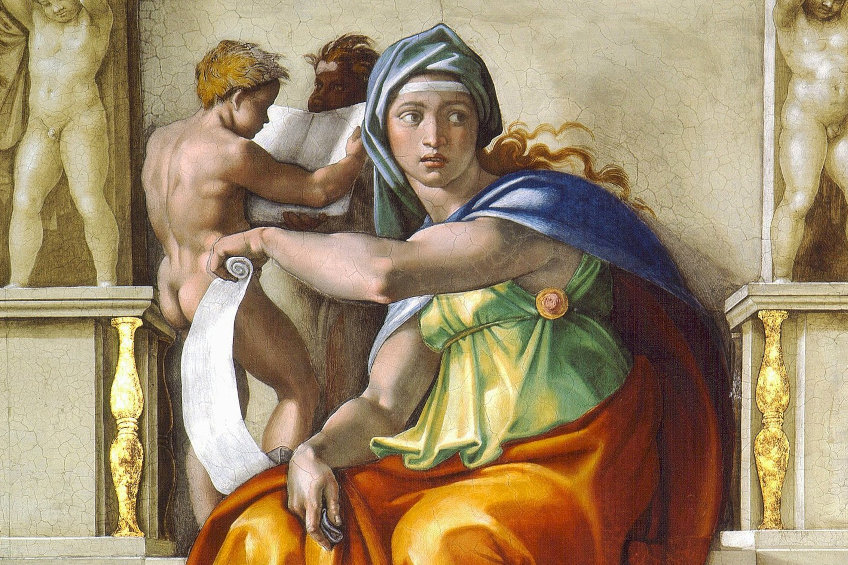Michelangelo Buonarroti – The Powerhouse of the Renaissance
Michelangelo was one of the greatest artists of the Renaissance, and was responsible for creating some of the most impressive and expressive sculptures in art history. Known as a renowned sculptor, painter, and architect, Michelangelo combined the formal restraint of Classical art with a dynamic grandeur to create work with a depth of appreciation of the human form that had been absent from Medieval art. What did Michelangelo study, how did Michelangelo die, and how old was Michelangelo when he died? These are just a few details included in our comprehensive Michelangelo biography. We will also delve into some of the most iconic works created by Michelangelo that continue to inspire many today.
Unveiling the Life and Art of Michelangelo
| Artist Name | Michelangelo di Lodovico Buonarroti Simoni |
| Date of Birth | 6 March 1475 |
| Date of Death | 18 February 1564 |
| Nationality | Italian |
| Movements, Themes, and Styles | Italian High Renaissance, classical antiquity, figurative art, human anatomy, and religious art |
| Mediums | Painting, drawing, architecture, sculpture, and poetry |
| Famous Artworks |
|
Michelangelo worked as a sculptor, painter, architect, and poet during the period now known as the High Renaissance. He later became a symbol of and source of artistic inspiration for many leading painters, including Eugene Delacroix, Johannes Vermeer, and Rembrandt. Michelangelo was so famous during the Renaissance that his was the first biography of a European artist to be published during its subject’s life-time. He is still considered one of the most influential figures in the development of Western art.
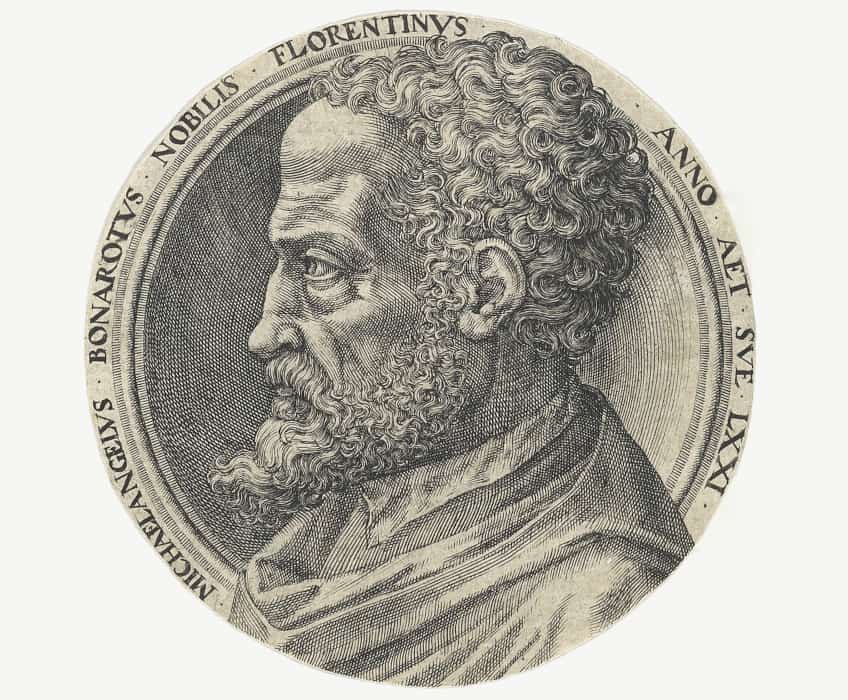
A Michelangelo Biography: A Master of Disegno
Michelangelo di Lodovico Buonarroti Simoni was born in 1475 during the High Renaissance in the Republic of Florence. Michelangelo’s success was not only unmissable but also incomparable since his skill and reputation were equal if not highly favored in comparison to figures and elder contemporaries such as Leonardo da Vinci. Michelangelo’s family were bankers who operated on a small scale for several generations until their success declined and Michelangelo’s father took up a government position as the judicial administrator of Chiusi della Verna. Michelangelo was raised in Florence and at six years old, lost his mother to a prolonged illness.
Michelangelo was placed under the care of a nanny and her husband in Settignano while Michelangelo’s father ran a small farm and marble quarry. It is believed that the marble quarry was the source of Michelangelo’s inspiration in his childhood and introduction to sculpture.
Where did Michelangelo live? Between 1488 and 1492, Michelangelo spent his education years in Florence and was taught by Francesco da Urbino. Michelangelo immediately took to art by copying paintings from the churches he went to and showed no passion for other academic subjects. Luckily for Michelangelo, Florence was the ideal petri dish of art, enlightenment, and networking since art was sponsored by wealthy patrons of the arts such as the Medici as well as the local town council and the merchant guilds. Florence was thus the home of Renaissance education, which saw a rise in Classical concepts. With inspiration from major figures and architectural masterpieces, Michelangelo’s visual education was incredibly rich.
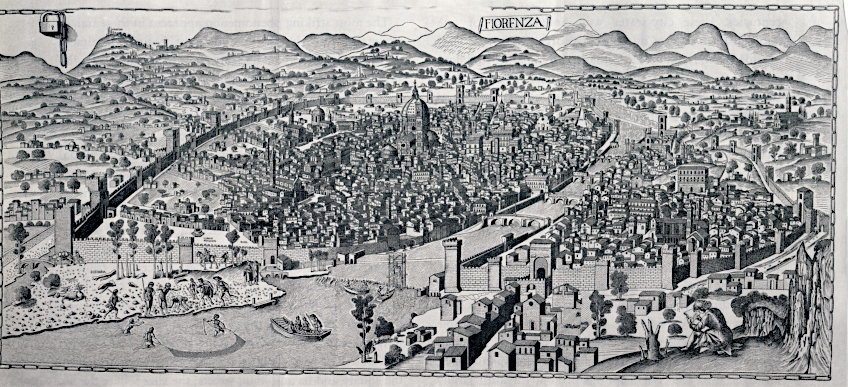
Early Apprenticeship and Education
“If people knew how hard I had to work to gain my mastery, it would not seem so wonderful at all”. Michelangelo’s mastery over sculpture, draftsmanship, and painting was no miracle and his view of his skill could not have been any less of the truth. So, what did Michelangelo study? At the age of 13, Michelangelo apprenticed with Domenico Ghirlandaio, who owned and managed the largest workshop in Florence. Ghirlandaio was a master of perspective and figure drawing as well as fresco painting and portraiture who taught Michelangelo since 1488. Ghirlandaio was convinced by Michelangelo’s father that the young and talented artists ought to be paid for his work, which was a rare achievement for a 14-year-old artist.
Michelangelo was also introduced to the Medici’s as one of Ghirlandaio’s best students, which helped him gain admission into the Medici-founded Platonic Academy in 1490.
It was at the Platonic Academy that Michelangelo built his artistic and philosophical knowledge influenced by scholars such as Poliziano, Marsilio Ficino, and Giovanni Pico della Mirandola. During this period, Michelangelo sculpted the reliefs for works commissioned by Lorenzo de Medici, including Madonna of the Stairs (1490-1492) and the Battle of the Centaurs (1491-1492). Michelangelo also sculpted under Bertoldo di Giovanni and was 17 when he was attacked by another student who disfigured his nose. With the death of Lorenzo de Medici, Michelangelo’s career was placed on hold and he moved to his father’s home to find his own footing as an artist.
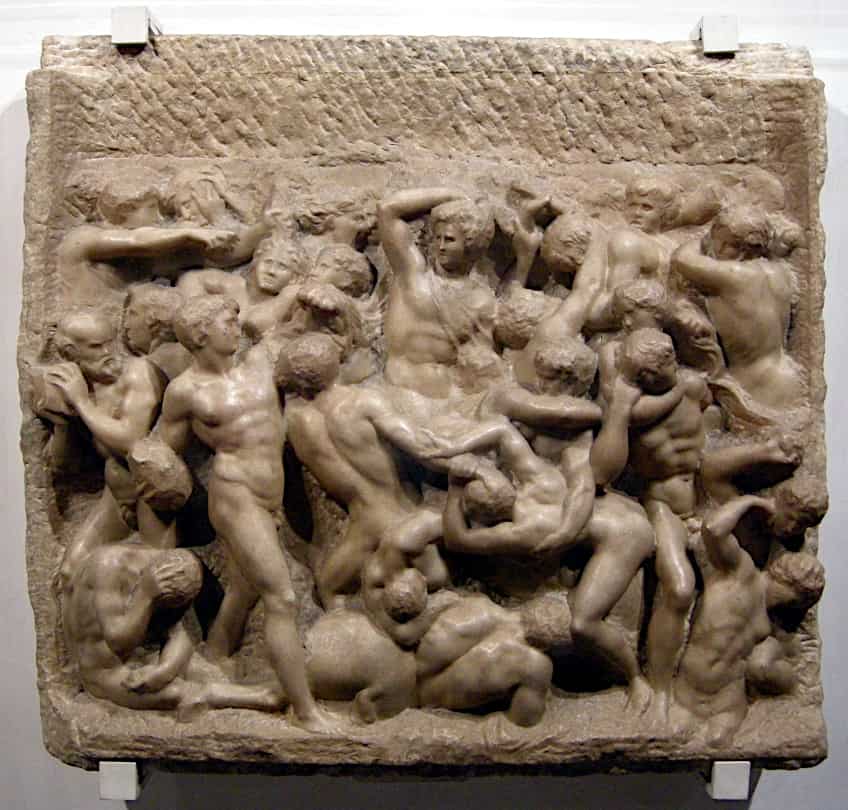
Michelangelo also pursued anatomy studies after creating a wooden sculpture of a crucifix in 1493 as a gift to the prior of the Santo Spirito church. Michelangelo was granted access to cadavers from which he practiced his anatomical studies and dissected the bodies to learn more. In the same year, Michelangelo also sculpted a massive marble statue of the Greek God Hercules, which was moved to France but later disappeared under mysterious circumstances. During the political chaos and the exile of the Medicis, Michelangelo relocated to Venice and then Bologna where he was commissioned to create several sculptures for the Shrine of St. Dominic. For the project, Michelangelo studied the works of sculptor Jacopo della Quercia, which later influenced some of his compositions on the ceiling of the Sistine Chapel.
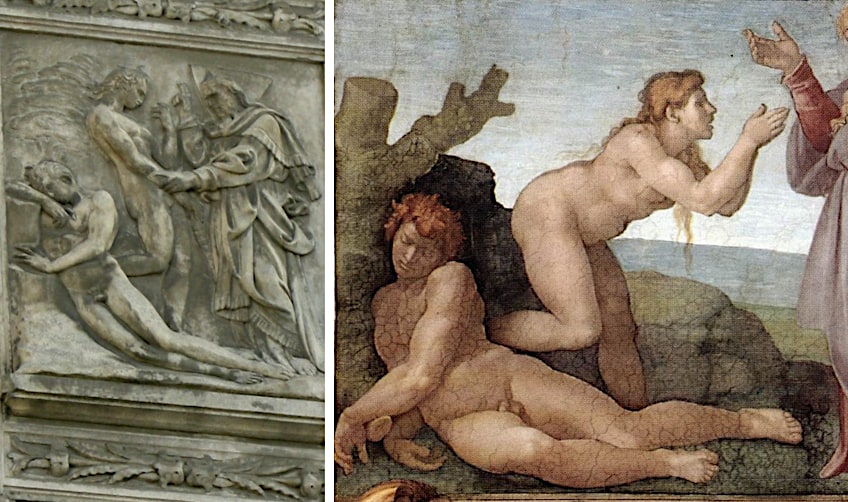
Michelangelo returned to Florence after the political turmoil and gained employment under the Medicis once again. He soon moved to Rome in 1496 and produced a sculpture of the Roman God Bacchus for the collection of Jacopo Galli’s garden.
Throughout his career, Michelangelo spent most of his time traveling to Rome, completing many commissioned works, including the tomb of Pope Julius II, the reconstruction of the Basilica of San Lorenzo in Florence, and the designs for the Medici Chapel.
Personal Lifestyle and Interests
Michelangelo never married. He was known to lead a private life and often claimed that his artworks were his children. While his poetry indicated that he did have some knowledge about relationships, his disposition was largely noted as monk-like. Many modern scholars have interpreted Michelangelo’s correspondence with younger men during his later years as an indication that he may have been homosexual. These include a lengthy and detailed poem to a nobleman named Tommaso dei Cavalieri, who was 23 when Michelangelo met him at 57. Tommaso dei Cavalieri.
That Michelangelo was impressed with the young man is evident in his writings and it seemed in their correspondence. Cavalieri shared the same admiration for Michelangelo, proclaiming “Never have I loved a man more than I love you”.
Michelangelo also taught a student named Cecchino dei Bracci, who was only 16 when he passed away and inspired Michelangelo to produce 48 funerary epigrams in honor of the boy. The absence of any similar interest in men prior to this period in his life has been presented as evidence that the childless Michelangelo may have seen himself as a mentor or father-figure to these talented young men. Michelangelo also shared a platonic relationship with a widow named Vittoria Colonna whom he met in Rome and wrote numerous sonnets to discuss their spiritual issues and express their appreciation for each other. The great sculptor was also known to have feuded briefly with Raphael with remarks from both artists on each other’s reputation and fame.
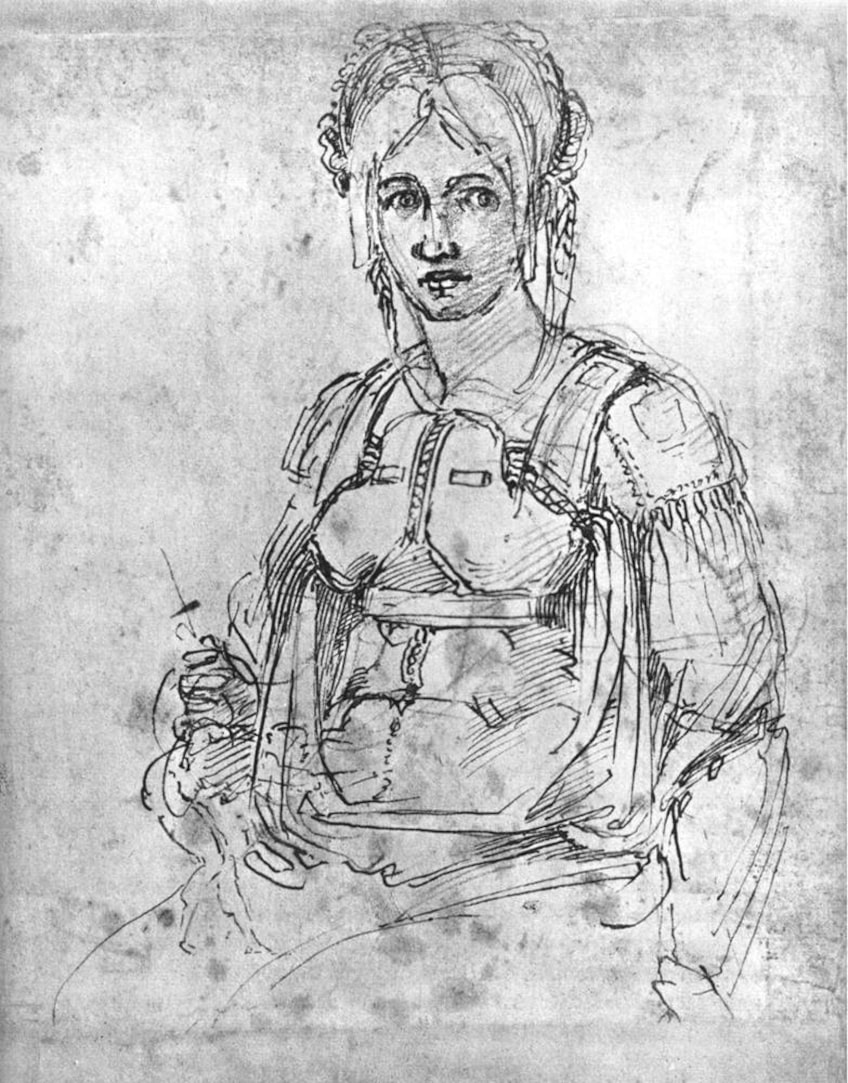
The Death of Michelangelo
Michelangelo’s art in the later stages of his life reflects his fascination with the concept of mortality since he was drawn to sculpting and drawing many smaller versions of La Pietà. He sculpted until his death while working on the Rondanini Pietà (1564) sculpture that was left incomplete.
On 18 February 1564, Michelangelo left the world at the age of 88. His body was moved from Rome to the Basilica of Santa Croce, as part of his last wish to rest his body in Florence.
His tomb was designed by Giorgio Vasari, who was commissioned by Michelangelo’s nephew, Lionardo Buonarroti, and took over 14 years to complete. Michelangelo’s funeral was a state event that was arranged by Cosimo I de Medici, who also provided the marble for Michelangelo’s tomb.
Significant Influences and Legacy
Many factors contributed to Michelangelo’s artistic development and success, including his exposure to sculpture and art since his childhood at the marble quarry. His studies under Domenico Ghirlandaio allowed him to learn multiple techniques, which he used to impress patrons such as Lorenzo de Medici, who provided him with opportunities to pursue his studies in classical art and literature. Furthermore, his interest in anatomy and willingness to go the extra mile by studying cadavers equipped Michelangelo with a deep understanding of human anatomy, which improved his figurative works.
Another major influence was a philosophical movement called Neoplatonism, which prioritized the spiritual and ideal nature of art.
Artists who influenced Michelangelo included figures such as Bertoldo di Giovanni, who was Michelangelo’s earliest mentor and introduced the young artist to classical sculpture. Michelangelo was also a fan of Donatello’s sculptural works as well as Leonardo da Vinci’s use of chiaroscuro techniques. Finally, his feud with Raphael also pushed him to continuously innovate and keep one step ahead of Raphael while excelling in creating unique interpretations of classical subjects.
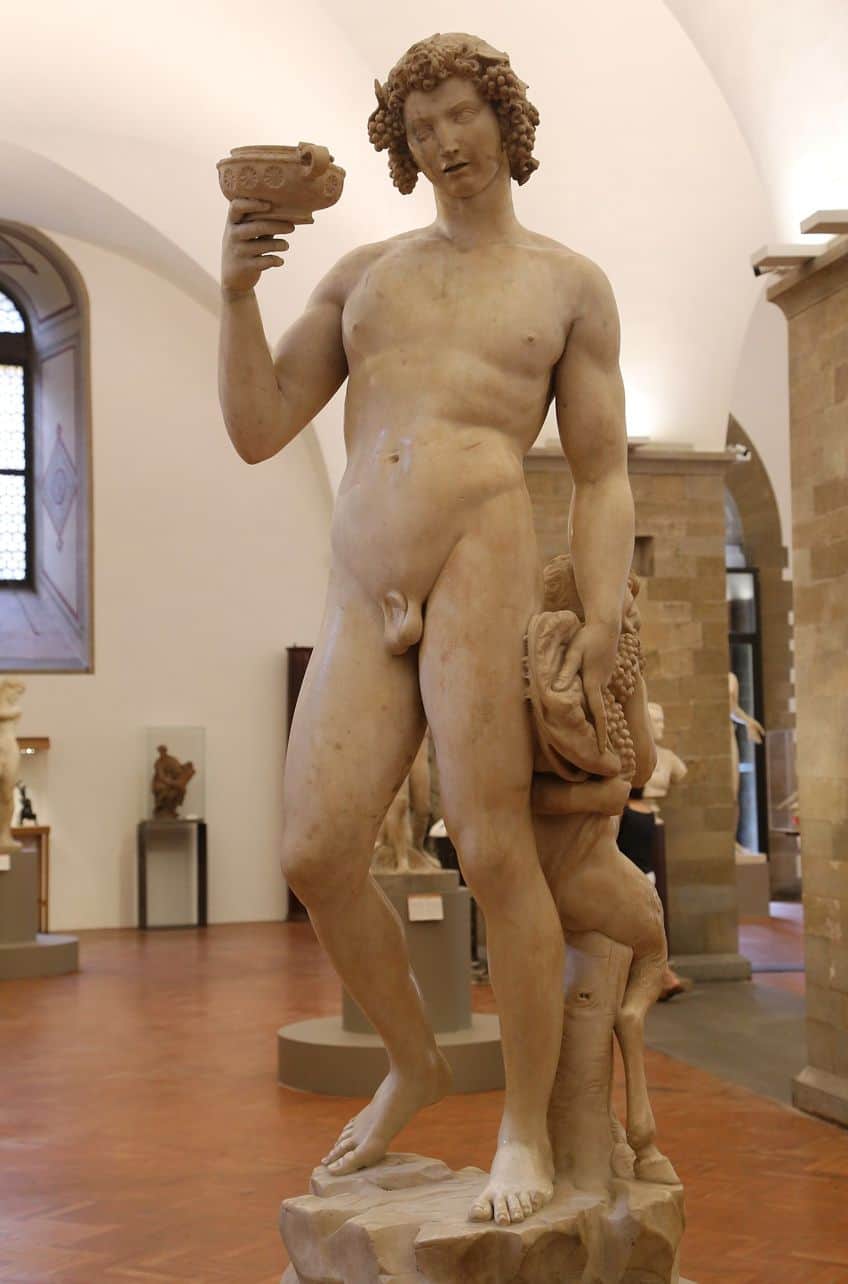
The most significant and career-defining events in Michelangelo’s career included the commission for the La Pietà sculpture, which brought him critical acclaim and recognition. His commissioned piece, David, was a colossal work that established his name in the arena of great master sculptors, not to mention the largest painting project of his time, the Sistine Chapel ceiling, which showcased Michelangelo’s artistic versatility and genius in composition. He was also involved in the design and construction of St. Peter’s Basilica, which was a significant contribution to architecture.
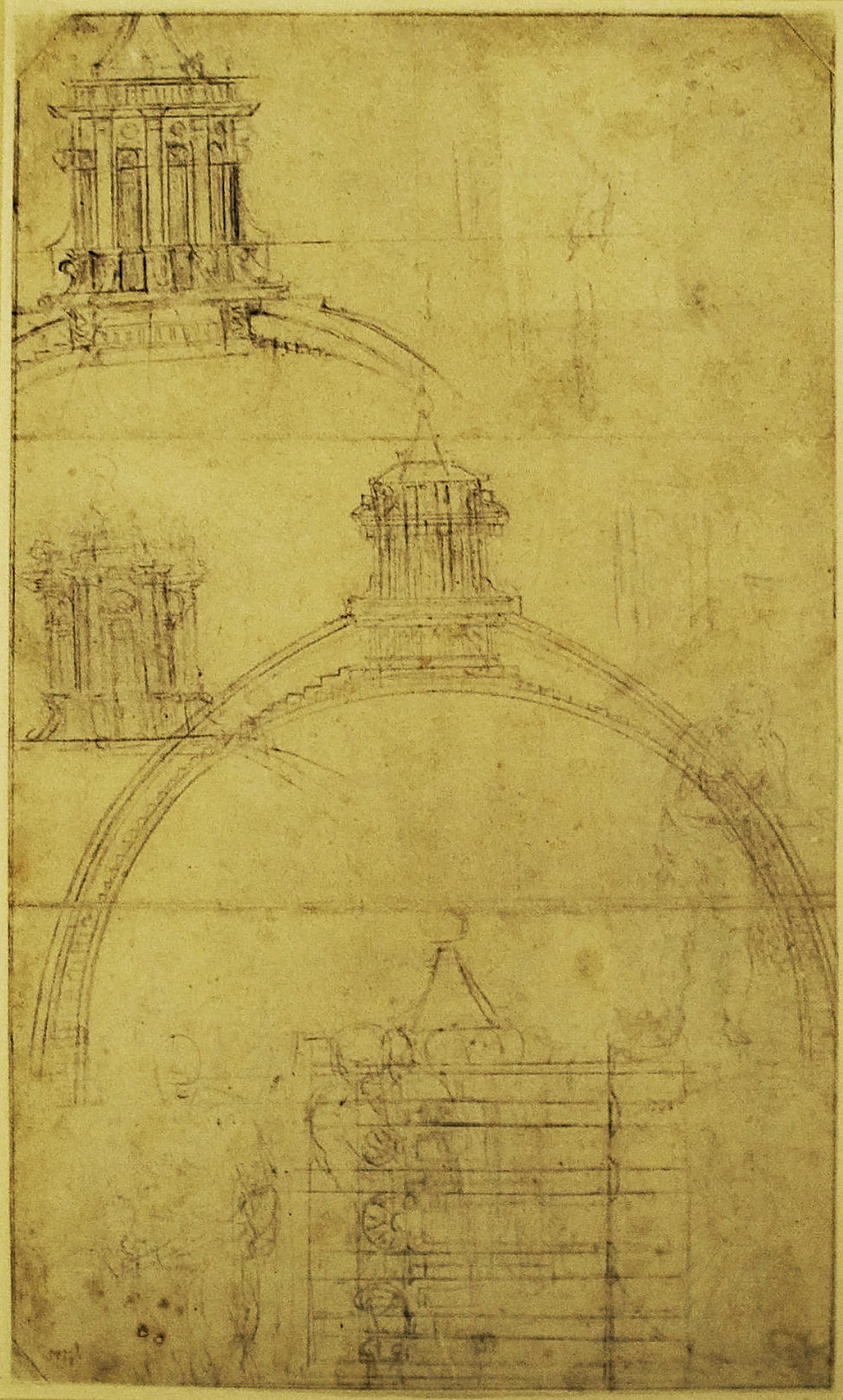
Michelangelo’s legacy can be noted in his use of different styles and techniques, coupled with his unique views of beauty and perfectionism across human anatomy, naturalism, and classical works. His use of the male nude as a symbol of perfection and his mastery over sculpting human expression is unmatched. Michelangelo was also an expert at using light and shadow to create depth and intensity in his sculptures while showing off his fresco painting skills in the Sistine Chapel.
His style and approach set the golden standard for many generations of artists to follow, who continue to praise the artist for his ability to capture the human condition while exploring the human form with such a meticulous attitude. Michelangelo’s artistic legacy extends far beyond the Renaissance and continues to inspire many today.
Exploring the Work of Il Divino: Michelangelo
What is Michelangelo famous for? Michelangelo was such a famous and well-respected artist that he was dubbed “the divine one” by all who knew of his talents. Nothing can describe Michelangelo better than some of his best artworks. Below, we will review a few iconic artworks by Michelangelo that provide insight into his creative practice and preferences across sculpture and painting.
La Pietà (1498 – 1499)
| Date | 1498 – 1499 |
| Medium | Marble |
| Dimensions (cm) | 174 x 195 |
| Where It Is Housed | Saint Peter’s Basilica, Vatican City |
The La Pietá sculpture is perhaps one of the most famous Michelangelo sculptures to date, which is located in the Vatican City at Saint Peter’s Basilica. The marble sculpture was commissioned for Jean Bilhères de Lagraulas, the Cardinal of France, who commissioned the work as a funeral monument. The sculpture is one of a kind since it stands as the only sculpture that Michelangelo signed his name.
Scholars believe that Michelangelo was inspired by a passage from Dante Alighieri’s Divine Comedy in Canto XXXIII, which stated: “O virgin mother, daughter of your Son…your merit so ennobled human nature that its divine Creator did not hesitate to become your creature”.
Michelangelo interprets a scene from the bible where Jesus is brought down from his crucifix and cradled by Mary who grieves her son’s death. Michelangelo skillfully realized the scene in Carrara marble by blending the styles of classical beauty with ideals of the Renaissance and Naturalism. He also used a pyramidal structure to construct the composition as the base widens towards the rock of Golgotha. The sculpture itself is imperfect in its proportions, however, the composition remains unique since Mary is portrayed as a young woman, which contradicts traditional renditions of Mary as a 50-year-old woman. Michelangelo’s interpretation and artistic eye for unique ideas in his artwork were reflected throughout his career in his sculptural works.
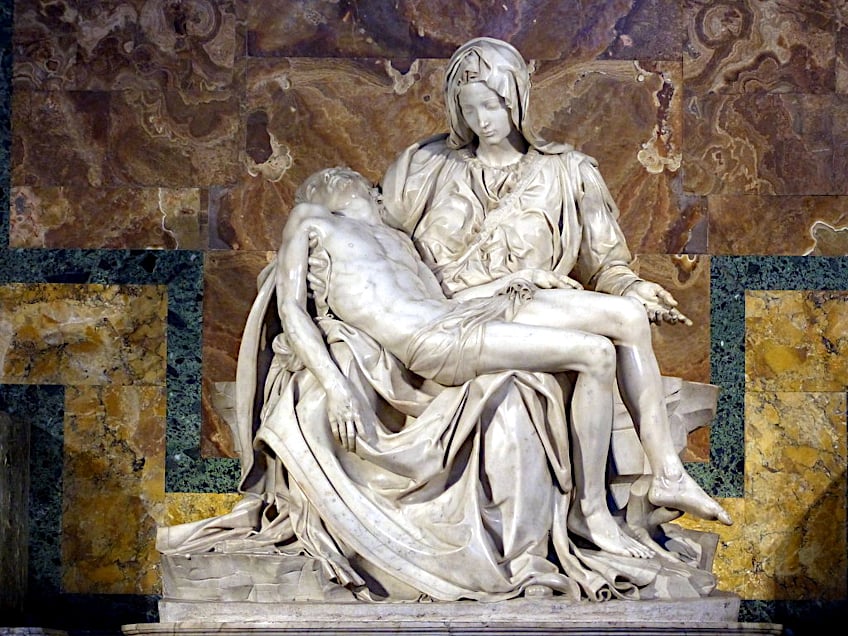
Madonna of Bruges (1501 – 1504)
| Date | 1501 – 1504 |
| Medium | Marble |
| Dimensions (cm) | 200 (h) |
| Where It Is Housed | Onze Lieve Vrouwekerk, Bruges, Belgium |
This famous marble sculpture depicts the iconic image of the Madonna and Child, which was a popular iconographic theme in Renaissance Christian art. Michelangelo created the Madonna of Bruges in a style that was different from the depictions of the Madonna and the infant Jesus, which often showcased Mary as looking down on the baby. However, in Madonna of Bruges, Mary is portrayed as almost aloof as Jesus is unsupported by her gaze or her hands.
The sculpture is special in Michelangelo’s career since it was the first artwork by the artist to leave Italy while he was still alive.
The sculpture was purchased by wealthy merchants from Bruges, Giovanni, and Alessandro Moscheroni, for 4,000 florins. The sculpture managed to survive the French Revolutionary Wars as well as World War II, and after many moves and relocation efforts, the sculpture was discovered in a salt mine in Altaussee, Austria, and stationed at the Church of Our Lady in Bruges. Not only is the historical trajectory and survival of the work fascinating, but it is also a testament to the work of the master sculptor and his legacy despite the political turbulence around the artist and artwork.
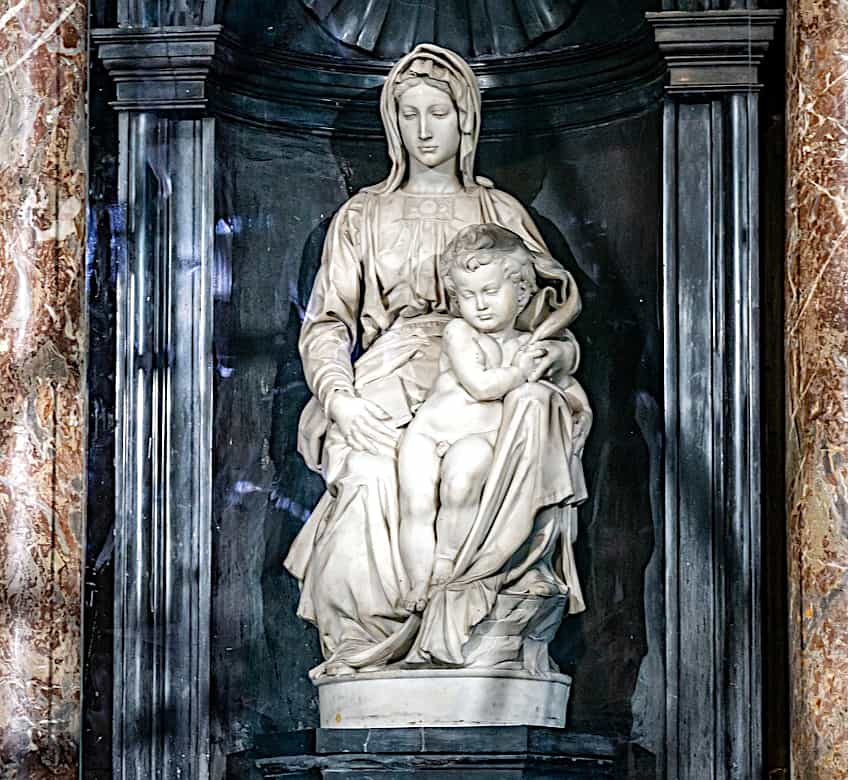
David (1501 – 1504)
| Date | 1501 – 1504 |
| Medium | Marble |
| Dimensions (cm) | 517 x 199 |
| Where It Is Housed | Galleria dell’Accademia, Florence, Italy |
Within the same period, Michelangelo also produced the David statue that soon became one of the model representations of the biblical character. The marble masterpiece portrayed the biblical character David, who was celebrated in Florence as a hero and symbol of bravery, victory, intelligence, and strength. The composed nature of David was sculpted with incredible detail for his musculature structure and refined Classical pose and expression.
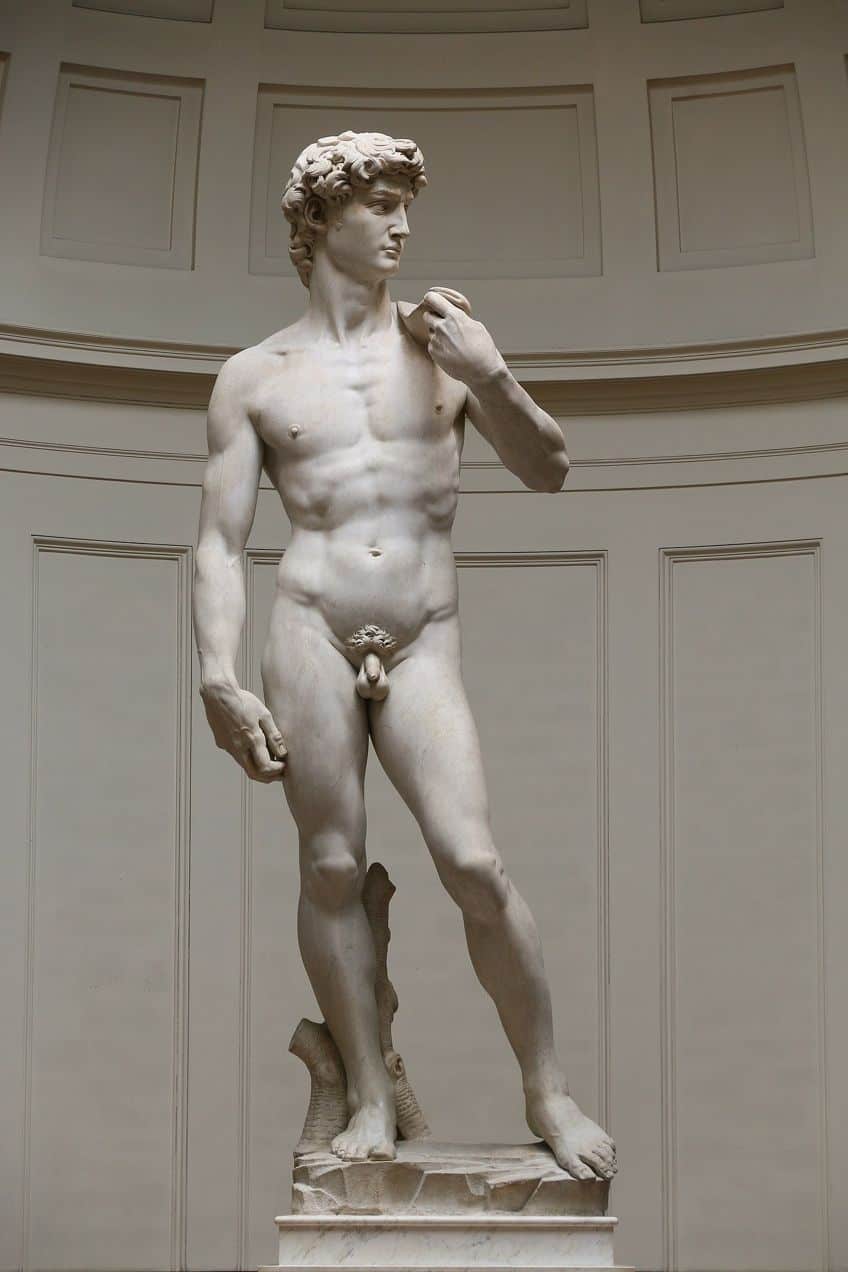
The sculpture was commissioned as part of a series of statues meant to line the east-end roof of the Florence Cathedral but was mounted in the Palazzo della Signoria. While the David is now most often photographed from a frontal viewpoint, the slightly oversized scale of the head and upper body relative to the lower part, reflects the sculptural perspective Michelangelo used to ensure that the proportions would be aesthetically pleasing when viewing this sculpture from below. In 1873, David was relocated to the Galleria dell’Accademia with a copy replacing it at the original site.
Since then, the statue was also attacked by Piero Cannata, a mentally ill man who smashed the statue with a hammer.
The Sistine Chapel Frescoes (1508 – 1512)
| Date | 1508 – 1512 (ceiling) and 1536-1541(altar wall) |
| Medium | Fresco |
| Dimensions (cm) | 400 x 130 |
| Where It Is Housed | Sistine Chapel, Vatican City |
Michelangelo’s greatest historical contribution remains the frescoes on the Sistine Chapel ceiling, which spans around 40 meters of religious painting composed of nine panels inspired by the book of Genesis. The fresco cycle also includes the altar wall on which he depicted the Last Judgement. Michelangelo was at first reluctant to take on the project, but after being granted free reign on the composition, his skill for creating truly unique masterpieces came to light. Scenes such as the Drunkenness of Noah, The Creation of Adam, and the Separation of Light from Darkness are the most iconic scenes from the fresco series that demonstrate the masterful hand of Michelangelo.
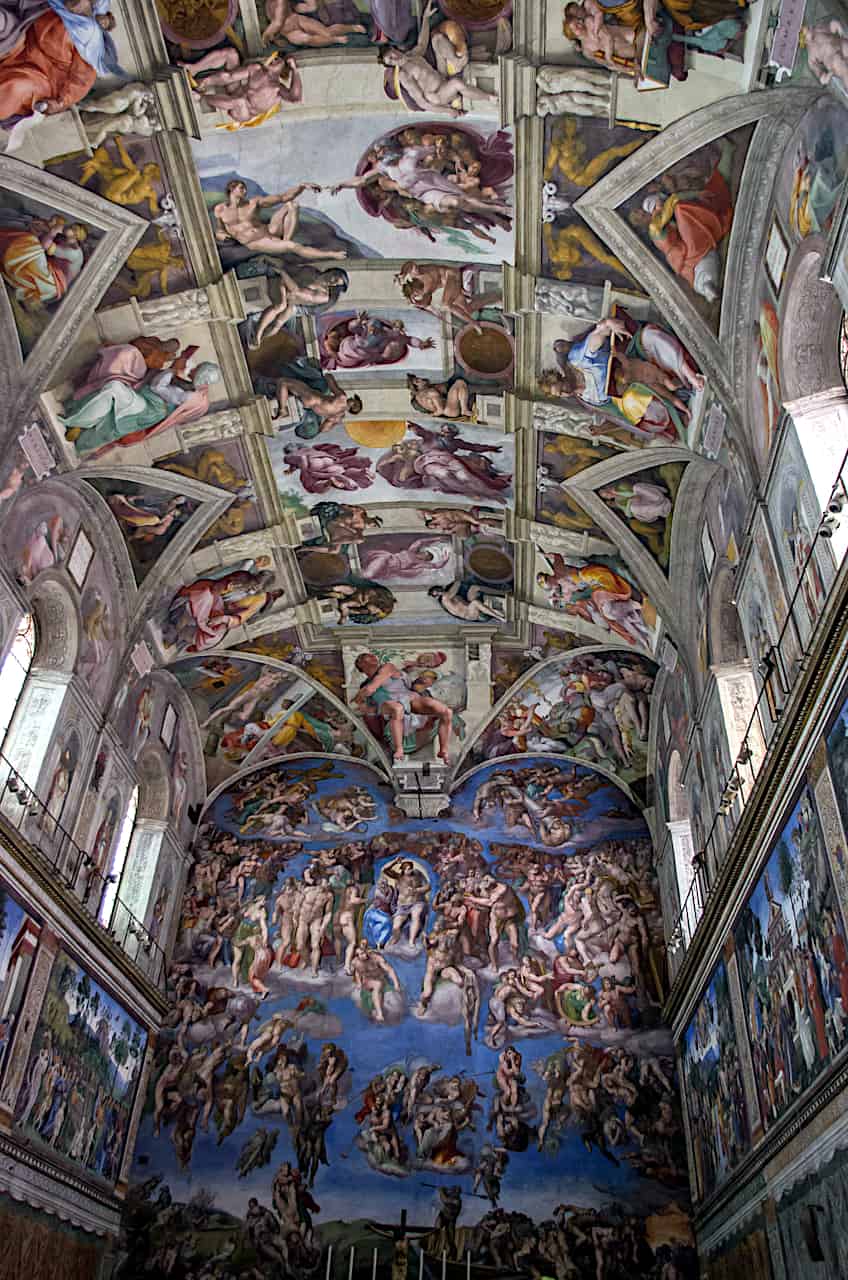
Legend has it that Michelangelo also used his own image to model the face of the creator and included 20 angels or youths called ignudi, which Michelangelo incorporated into the smaller scenes. Leaving no space for a lack of creativity or detail, Michelangelo dedicated himself to his vision in all aspects of the Sistine Chapel frescoes, paying special attention to the hands and feet of all figures.
The Dream of Human Life (c. 1533)
| Date | c. 1533 |
| Medium | Oil on slate |
| Dimensions (cm) | 65.4 x 55.9 |
| Where It Is Housed | The National Gallery, London, United Kingdom |
The Dream of Human Life is a famous drawing by Michelangelo that portrays an allegory of virtue and vice with the central figure representing the human mind and the peripheral figures representing human vices. In essence, Michelangelo left us with an image of his mind and a personification of his soul as an angel with a trumpet cracks the fontanelle area of his skull. The fontanelle is where the soul is believed to enter and leave the body both before and after death.
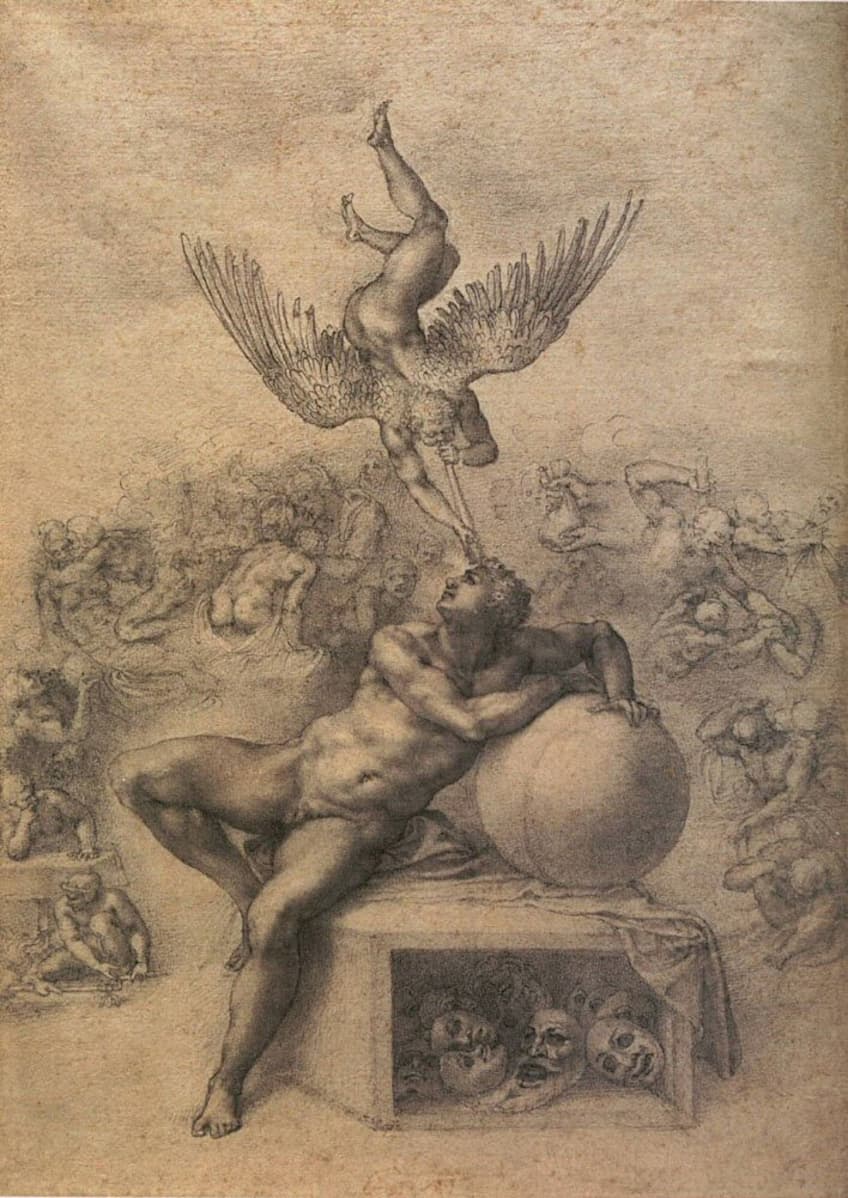
Michelangelo also referred to his mind as his “memory box”, which is represented by the open box containing various masks and is a form of self-portrait. The large sphere represents Michelangelo’s eyeball, which symbolizes the imagination instead of the planet Earth. Michelangelo’s inclusion of a disembodied phallus is also thought to represent the artist’s struggle with his mind and the fertile nature of his imagination. Sex was thus a metaphor used to refer to creation.
The drawing is certainly unique for its time, as it is regarded by many scholars as the first drawing created not as a preliminary study, or observational sketch, but as a complete artwork comparable to a painting.
Interesting Facts About Michelangelo Buonarroti
Michelangelo was a private individual who was recognized for his complex personality. He was a perfectionist who would often work for hours on end on a project without rest and was known to become absorbed in his work. His work ethic was top notch and given his disposition on achieving the most perfect form of his subject, Michelangelo was meticulous in all areas of art, even when creating preparatory sketches.
Michelangelo is often praised for being one of the greatest sculptors and painters of the Renaissance, however, he was also a skilled poet who wrote extensively on subjects such as art, love, and spirituality, which shed a lot more insight into his creative process than his drawings did.
While he was a poet and perfectionist, he was also an art collector who collected a hoard of manuscripts, sculptures, and drawings that he deemed valuable for their historical significance, which is unsurprising for someone who loved to study and create art. One might also assume that with all the attention and fame, Michelangelo lived lavishly. This was not true since he lived a humble life and donated significantly to charities during his time. During his lifetime, Michelangelo created art for around nine different popes, which only demonstrates his reputation and reach as a versatile artist.
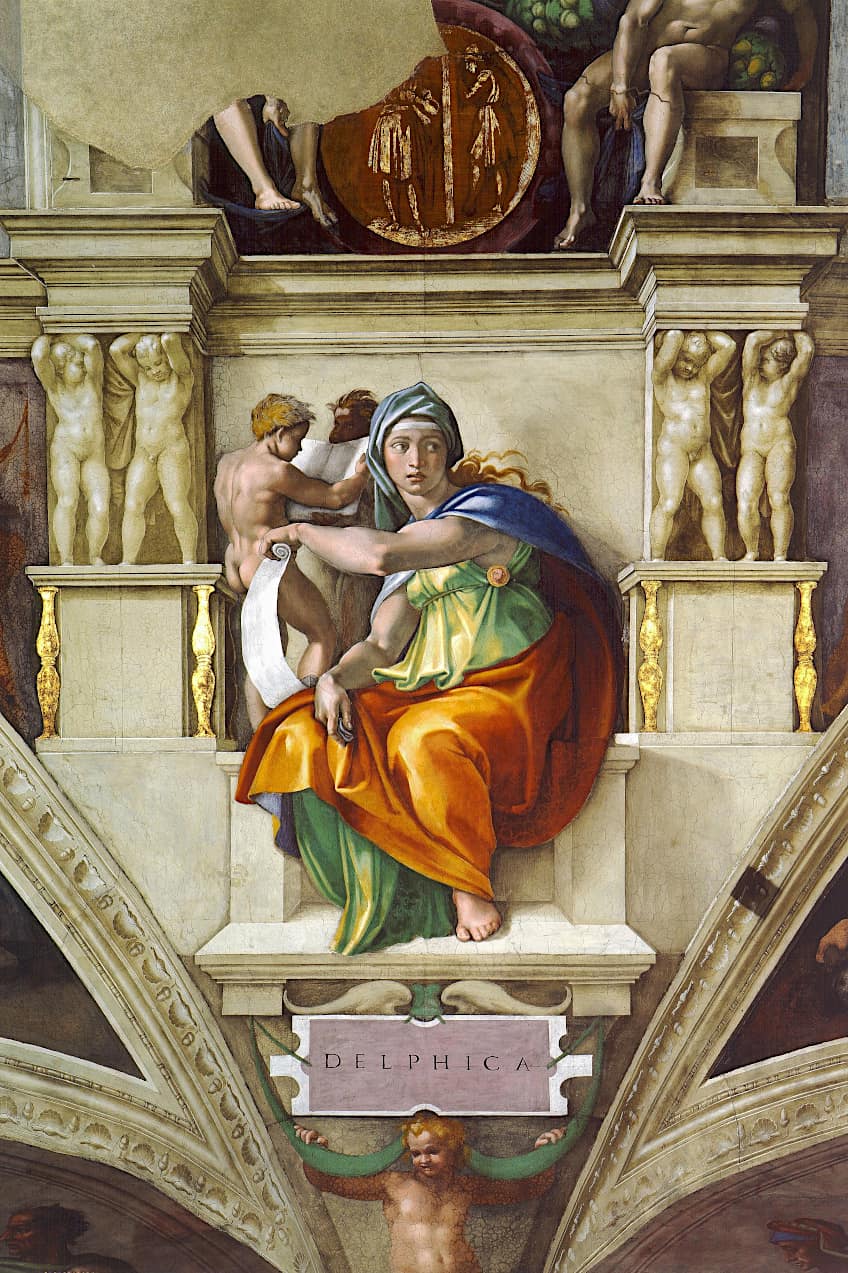
Toward the mature stages of his life and career, Michelangelo adopted Spiritualism and was criticized by Pope Paul IV since his new beliefs were founded on direct communication with God and not through the Church. During his artistic career, he completed around 48 paintings, with 40 of those paintings executed for the Sistine Chapel. In total, there are around 200 artworks attributed to Michelangelo, which include drawings, paintings, and sculptures.
Michelangelo’s mastery of sculpture and painting reminds us of the power of artistic expression to transcend time and inspire the soul. His long-standing legacy was defined by his expert skills in human anatomy, light, shadow, and the ability to convey emotion while setting the benchmark for artistic excellence. Artists today can draw inspiration from Michelangelo’s innovative techniques, bold compositions, and acute attention to detail to create expressive and impactful experiences in art.
Take a look at our Michelangelo famous works webstory here!
Frequently Asked Questions
Who Was Michelangelo Buonarroti?
Italian Renaissance artist, Michelangelo Buonarroti, was a highly influential figure in Western-European art history and was best known for his contributions to sculpture, painting, and architecture. Buonarroti was celebrated for his technical prowess, professional success, and dedication to art.
What Was Michelangelo Famous For?
Michelangelo Buonarroti was famous for multiple artistic achievements, including his fresco paintings at the Sistine Chapel in the Vatican City, his marble statues titled La Pietà (1498 – 1499) and David (1501 – 1504), and his architectural contribution to the design and construction of the St. Peter’s Basilica building in the Vatican City. Michelangelo was one of the most influential artists of the Italian Renaissance.
Was Michelangelo Married?
Michelangelo Buonarroti was not married, however, there was speculation that he was infatuated with an Italian nobleman named Tommaso dei Cavalieri, as well as involved in a platonic relationship with a widow called Vittoria Colonna.
Liam Davis is an experienced art historian with demonstrated experience in the industry. After graduating from the Academy of Art History with a bachelor’s degree, Liam worked for many years as a copywriter for various art magazines and online art galleries. He also worked as an art curator for an art gallery in Illinois before working now as editor-in-chief for artfilemagazine.com. Liam’s passion is, aside from sculptures from the Roman and Greek periods, cave paintings, and neolithic art.
Learn more about Liam Davis and about us.
Cite this Article
Liam, Davis, “Michelangelo Buonarroti – The Powerhouse of the Renaissance.” artfilemagazine – Your Online Art Source. October 2, 2023. URL: https://artfilemagazine.com/michelangelo-buonarroti/
Davis, L. (2023, 2 October). Michelangelo Buonarroti – The Powerhouse of the Renaissance. artfilemagazine – Your Online Art Source. https://artfilemagazine.com/michelangelo-buonarroti/
Davis, Liam. “Michelangelo Buonarroti – The Powerhouse of the Renaissance.” artfilemagazine – Your Online Art Source, October 2, 2023. https://artfilemagazine.com/michelangelo-buonarroti/.


